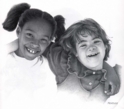 INCLUSIVE TEACHING:
INCLUSIVE TEACHING:
CHAPTER NINE Build a Community for Learning
INCLUSIVENET
The internet provides a valuable source to explore issues related to segregation and inclusion, people with disabilities in school and society, and inclusive teaching. Following are some sites which you may find interesting and valuable.
Back Pack
Responsive Classrooms A site with many resources related to building community and addressing social and emotional needs of children. Very practical resources and materials.
Tribes is a process of building community, respect, and responsibility in a community of learners in a school. This site provides an introduction and resources related to this approach.
The Center for Social and Emotional Learning works to “promote positive and sustained school climate. . . that nurtures social, emotional, ethical, and intellectual skills and dispositions to enhance student performance, prevent drop outs, reduce physical violence, bullying, and develop healthy and positively engaged adults” by integrating “social and emotional learning with academic instruction”.
Emotions, relationships, and learning
Emotional Intelligence is the capacity to deal with one's emotions and interpersonal relationships, both a key to cognitive functioning and as important in adult success. Building community in a school helps promote emotional intelligence; strategies for increasing emotional intelligence can help build community. Emotional Intelligences in Schools. Article explores the importance of understanding emotional intelligence in learning. Here are links to sites on emotional intelligences. Here's another good site.
Community and human needs
'Trusting' School Community Linked to Student Gains. Good article from Education Week that illustrates the importance and impact of building community in a school.
Developing Empathy in Children and Youth. Great article about practical strategies.
Building a culture of community in the school
The Supportive Classroom. An initiative in 14 Vermont schools to create safe and supportive schools based on four core concepts: trust, sharing, belonging, and respect.
Twenty-Five Activities for Building Student Character and School Community. an excellent article based on the six pillars of character developed by the Josephson Institute of Ethics - trustworthiness, respect, responsibility, fairness, caring, and citizenship.
Building community in the classroom
Classroom Community: Building a Solid Foundation. Describes how to get started in the school year building community in the classroom from Inspiring Teachers, a great website. Here's another article from their site: Tips on Building a Classroom Community.
Ten Ways To Build Community in Your Classroom. A short article by Rabbi Shmuel Jablon with practical, specific suggestions.
Building a Classroom Community. A great practical article from Performance Learning Systems.
Creating Classroom Communities in Elementary School. This great site shares the experiences and stories directly of several teachers in an elementary school working to create a community in their classrooms.
Creating Learning Communities - Models, Resources and New Ways of Thinking About Teaching and Learning Book written by 30 people describing strategies and approaches for building schools as learning communities.
The Responsive Classroom: Teaching Children to Care. A great short article that provides a good introduction to the responsive classroom approach.
Building Community in the Classroom. Article written by a high school teacher.
Jigsaw Clasroom. Good site for this approach to cooperative learning.
Random Acts of Kindness. Encourage kindness among your students. Some great ideas on this site.
Peer support
The goal: 'Just to be a friend'. Great article about a high school that sought to bridge the divide between students with and without disabilities.
Rules and expectations
Rules vs. Expectations. A good article by Marvin Marshall drawing a distinction between rules, which are often counter-productive in relationships, and expectations.
Ten Activities for Establishing Class Rules. This article shows some options for involving students in developing classroom rules.
Artwork reprinted by permission of
Martha Perske from PERSKE:
PENCIL PORTRAITS 1971-1990
Nashville: Abingdon Press, 1998.